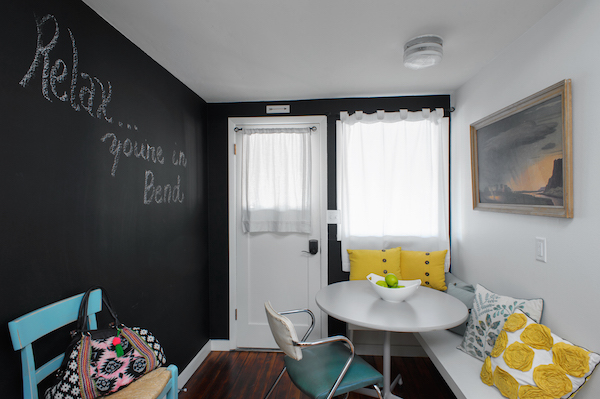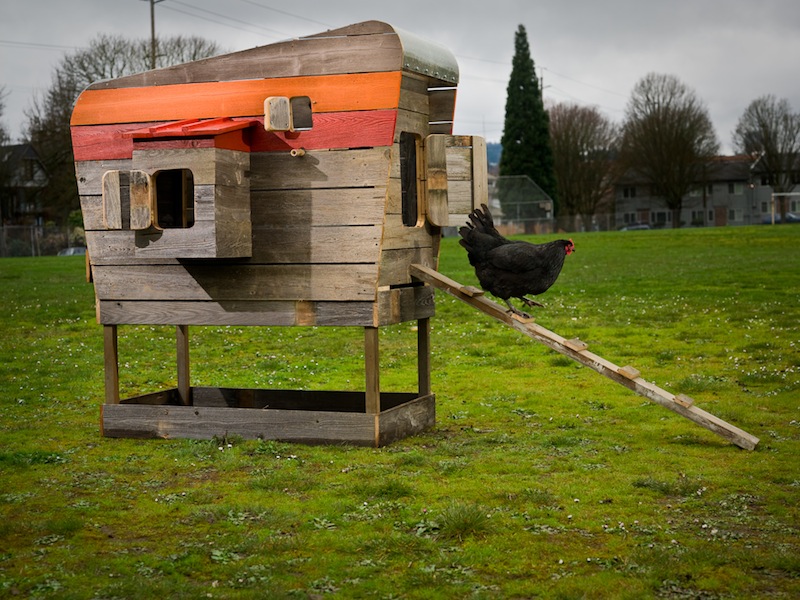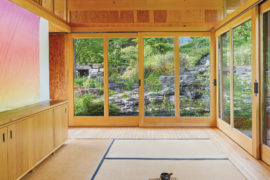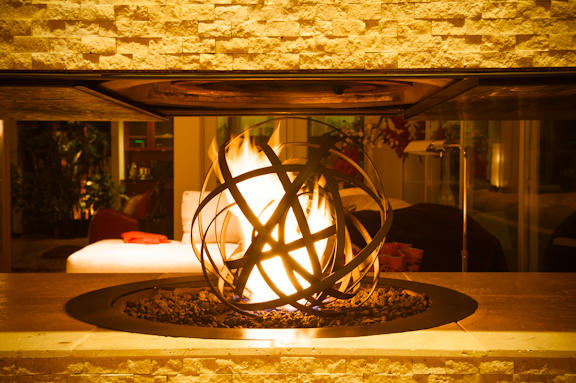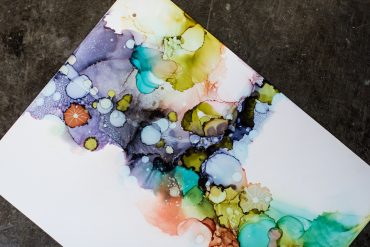written by Melissa Dalton | photos by Joseph Eastburn
As a longtime lover of old homes and decorating with salvage, designer Sarah Phipps enjoys giving neglected houses new life. “It’s a challenge,” she said. “And a fun puzzle to figure out.” Here, she shares a kitchen redo that she did for a larger remodel of a 1912 Bend triplex, as well as her top tip for getting the vintage vibe right.
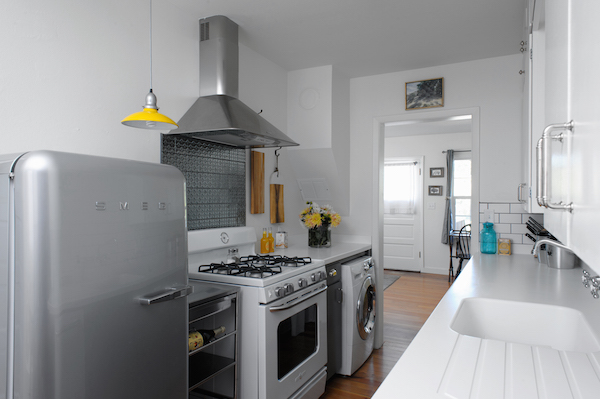
What did the space look like before?
Everything was battered and neglected. All of the floors were covered with dirty, ugly carpet. But underneath that was the original wood flooring. And the trim on the windows and doors were all original, [as were many of the windows]. So I tried to save all the vintage details.
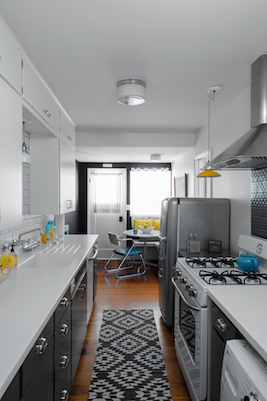
We kept the original cabinets, and I just cleaned them and painted them because they were in good shape. I kept all the wood floors. Then I added the tile backsplash. The countertops are Corian because I was trying to use a material that was more budget-friendly but also durable and easy to clean. And I didn’t want it to jar with the vintage quality of the house. To make it feel more vintage, we had them make a deep, integrated sink and route out the drainboard beside it.
What about the appliances?
The client wanted new appliances [for easy upkeep]. The Smeg refrigerator has a smaller profile. The range and dishwasher are both from the GE Artistry series, which is a good price point. They have a good combination of modern and vintage styling, which is what I was going for in the whole place.
Any tips for people wanting to do something similar?
Before you get started, one of the most important things is to take a moment and breathe. Don’t just start ripping everything out. Stop and very carefully walk through and look at the space. Often I find a cheap material has been installed and preserved the vintage material beneath it. Look for the original details because those things are almost impossible or ridiculously expensive to replace.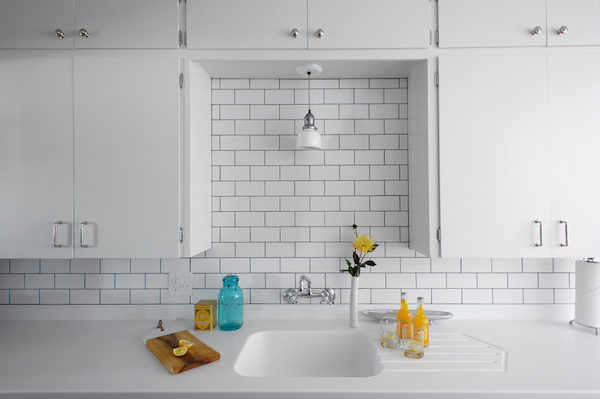
Can you give me an example?
It might cost just as much to refinish an existing wood floor as it does to put a new one on top. But know that the wood from 60 or 70 years ago was old-growth wood. It had a lot more personality and character. You’re not going to be able to replace that. You literally cannot go out and buy that wood anymore. I think that even if things are a little rough around the edges, that roughness is what makes things have soul. There’s something you can feel that radiates off of them. So, try to save that and not just gloss over everything. The kneejerk reaction is to go in and to make everything brand new, but brand new is not always better.
